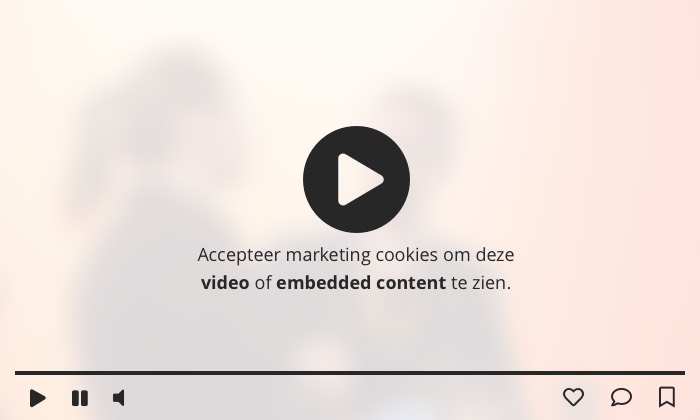Drive digital innovation by leveraging connectivity, mobile & data

Alberto Prado is Vice President digital innovation at Philips Consumer Lifestyle. In this capacity, he is responsible for driving digital propositions that enhance the consumer experience and deliver new business model opportunities. I interviewed him as a part of three interviews on digital innovation at Philips.
You are the Head of Digital Innovation at Philips Consumer Lifestyle. What are your role and the sector Consumer Lifestyle about?
Let’s start with Philips as a group. It’s our mission to improve people’s lives through meaningful innovation. In fact, we strive to make the world healthier and more sustainable through innovation. Our goal is to improve the lives of three billion people a year by 2025. Within that context, Consumer Lifestyle is about delivering value to the consumer, be it in the space of oral care, male grooming or kitchen appliances, to name a few.
My role is to identify opportunities to enhance the product experience by introducing software enabled digital elements in our propositions and then help to execute the technologies that are required to deliver them.
What is the need for consumers to have products with enhanced digital services?
Digital provides the ability to create more immersive and personalised experiences for the consumer, and therefore make these experiences much more relevant for you as an individual. We do that by leveraging the following elements:
- Connectivity, embedded in products and providing a link to back-end services;
- Mobile, smartphones or tablets that interact with products and people and enabling an immersive experience;
- Data, to understand our consumers better and be able to provide personalized experiences with relevant content.
Connected products & services
A good example of such a connected product is Hue. Hue is triggering enormous interest from app developers who are using the API’s provided by Philips. They build applications that make use of Hue as an innovation platform for many different purposes, thereby helping to drive further innovation and consumer value.
Digital Innovation requires by definition an open approach:
- From the very beginning cocreating with consumers and inviting other parties to the table;
- After the product launch, leveraging developer ecosystems to continue to drive innovation around it.
In the app store you will see now a growing number of Hue related apps, offering possibilities that we ourselves did not even think of.
Mobile
Today we look at leveraging devices that are already embedded in people’s lifestyles, such as smartphones and tablets. They offer computational capabilities, large screens, connectivity – even sensors – that not only come to us for free, but – more importantly – are already an integral part in people’s daily routines and hence provide a natural resource.
Smartphones are becoming the remote control of your life. People look to interact with products via their smartphones and tablets, because they already use them in many aspects of their lives and see the benefits of integrating new experiences on that same platform.
In the future that may not be even required, as devices around you become inherently intelligent adapting functionality based on context – without even the need for a UI – and therefore not even requiring the support of a smartphone/tablet. We call this somewhat visionary future ‘Ambient Intelligence’.
Data
Digital technologies allow you to personalize an experience and therefore make it more relevant to the consumer. There are 3 important elements to leverage data for consumer propositions:
- Sensors, which provide us with the ability to capture data.
- Connectivity to help us transfer data to a back-end in a secure and reliable way.
- Analytics and related algorithms that enable us to extract insights and develop value to the consumer.
But technology per se is not the goal. It is primarily about being able to deliver meaningful innovations to the consumer. We need to create propositions that, by combining hardware and software elements, address a consumer challenge effectively. Within that context, data is obviously handled with all the privacy and legal aspects required.
What is the impact of digital innovation on Philips’ Consumer Lifestyle sector?
It has a growing impact. Philips Consumer Lifestyle, and Philips as a whole, is very much aware of the power of digital, for both:
- Becoming a more digital organisation with regards to our operations, and
- Being able to deliver differentiating digital experiences to our consumers.
The Digital Innovation program acts as enablers and a catalyst of digital innovation across all businesses. Our role is based on three pillars: Consumer, Business Models and Technology.
- Consumer: At the center of any digital innovation is the consumer. A deep understanding of the consumer and their needs is a fundamental element to create digital propositions that have true meaning.
- Business models: once you have established a different engagement model with consumers, based on regular interactions with consumers, you can create new ways of generating value from that relationship.
- Technology: it is about designing the right architecture and developing the technologies required to deliver digital products to the market.
What is the most important issue you encounter?
It is not an issue per se. Digital requires us to operate in different ways. We are establishing a different relationship with the consumer, moving from a transactional model to one where we can establish an ongoing dialogue. To be effective in this new paradigm requires:
- A change of mindset;
- A shift in culture;
- And to have the appropriate tools.
Our company gravitates strongly around Health & Wellbeing. We see a growing need to provide innovative and meaningful solutions in that space and all our businesses are geared to deliver those solutions.
What is the most important consumer trend for Philips to focus on?
Our company gravitates strongly around Health & Wellbeing. We see a growing need to provide innovative and meaningful solutions in that space, and all our businesses are geared to deliver those solutions. Obviously, this is underpinned by macro trends such as Aging Population, Personal Analytics – and above all, the notion that people want to live healthier and better lives.
How does Philips organize digital innovation?
The ultimate goal is to embed digital throughout our portfolio as well as develop new digital propositions; it is not another project on top of what we do, it is a change that has been happening in the world and likewise in our company. Digital will not go away, it is here to stay, to grow and evolve. At Philips Consumer Lifestyle we have a central team that I lead which is responsible for enabling the businesses to transform and bridging the gap until digital has become part of our DNA.
How are innovative teams composed?
Innovation, and more so digital innovation, requires a cross-functional effort. On top of that, digital allows you to cocreate with consumers very effectively requiring you to iterate software at a faster clock-speed. We are open to partner-up with whomever we believe can contribute to delivering meaningful innovation. Digital is an open paradigm per definition. The speed at which it moves, and the power of innovation it can unlock, requires it to be an open effort in order to be successful. We involve partners to share expertise and competences that complement ours and we collaborate with them to develop innovations that meet and exceed the expectations that consumers have of a company like Philips.
What limitations does Philips meet?
There is a cultural shift that is quite profound and needs to be executed with agility. The challenge that companies face when moving into digital, is typically that clock-speed needs to be increased. In order to be competitive you need to become a real-time organisation.
How does Philips organize innovation global versus local?
You need to be locally relevant to compete successfully; at the same time you can leverage the global scale of a multinational like Philips. From an innovation perspective it is important to:
- Establish the right balance between technology platforms;
- Modular components;
- And developments that are required to satisfy a particular market need.
It all needs to fit together and make perfect sense from a strategic and business perspective. And all of this is coupled with a deep understanding of local consumer insights that can enable us to design the right propositions.


 ChatGPT
ChatGPT 











